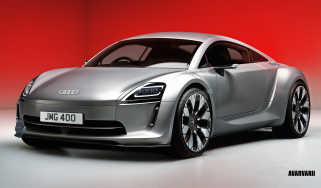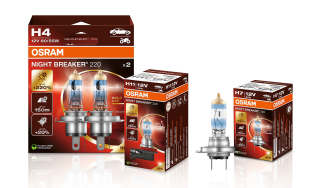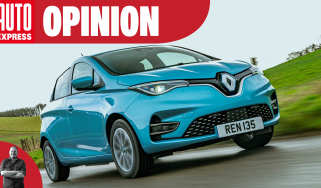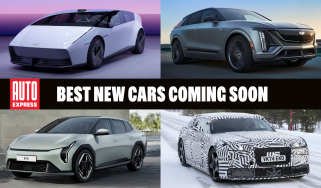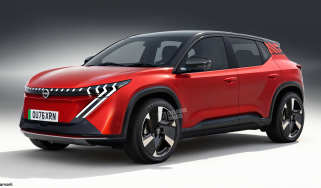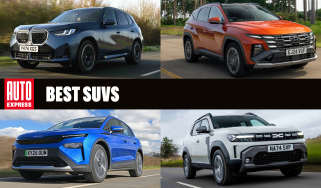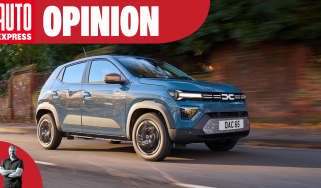Aston Martin to swap quantity for quality with new harder, faster model range
New CEO says four new cars in 18 months was too much; will boost value by launching faster or more luxurious versions of existing models
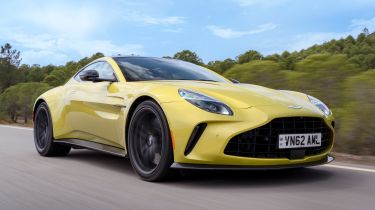
Aston Martin CEO, Adrian Hallmark, says his company needs to focus its attention on customer retention and giving buyers reason to upgrade their cars – rather than launching new core models and broadening its product line-up.
“We've gone through this frenzy of product development,” Hallmark said – referring to the new DB12, DBX 707, Vanquish and Vantage, which all launched within 18 months of one another. “There's no way in my old world, in 25 years, any of the brands that I was directly or indirectly associated with – no one ever tried that.
“It almost worked, but not every car was perfect on day one. There's been delays left, right and centre. But the ambition, the product portfolio, is the best [Aston has] had,” he said.
He referenced Porsche as an example of a company that keeps its customers coming back and regularly upgrading their cars: “Vantage is a great car,” Hallmark said. “But [the Porsche] 911 has 15 derivatives in a five-year period. Which one’s next [for Vantage]? Roadster… Great. And next? OK, DB12? Same. Vanquish? Same. DBX? Same…
“What we do need to do for customers that buy an early Vantage, DB12, DBX or something, is after two years – because the average ownership cycle in luxury is around two years, a little bit less or a little bit more, depending on residuals – in two years' time, there's got to be a reason to buy a better Vantage. And in two years after that, another better Vantage. We’ve never had that intensity of lifecycle innovation that we need. If the competition is doing it, and we're not… It’s never as successful as it needs to be”.
Hallmark insisted he won’t do a "derivative for every name plate” but suggested a solution may be a series of harder, faster, or more luxurious models – aligning cars such as the Vantage with the extensive 911 range, which now includes everything from the base Carrera, to the hybrid GTS, track-focused GT3 RS and flagship Turbo S.
He’ll also look to offer greater scope for personalisation and extra choice when it comes to optional extras or packages at the point of order. The CEO said: “I asked the team to list out every option of every luxury brand offered above the base car – the options that everybody else offers that we don't. What number do you think we're missing?” The answer, apparently, is 190 separate items or extras.
“One of them is the starlight roof lining on a [Rolls-Royce] Phantom, which I don't think fits the [Aston Martin] brand. There's a load of others that don't work as well for a performance brand, but there's at least 100 [that do],” Hallmark told us. “Titanium exhausts, carbon wheels, high-end audio. The value of that alone is phenomenal”.
In addition to these extra variants and profitable options, Hallmark will forge a plan to incrementally introduce electrification across the Aston range. “Whilst [customer appetite] is not as clear-cut as it was three or five years ago, the general direction is absolutely towards electrification,” he said.
“Our commitment is towards carbon neutral, net zero,” he said. “But to get there, we will add incremental products in the hybrid space before we get to full electric. So we'll still have our first electric car in this decade, but we'll add hybrid derivatives.
“The key message is we’ll be flexible and have multiple options that fit with legislative and customary requirements over that 10-year period (to 2035). We're not resisting, we're just taking account of legislation and we're trying to manage through a period of high risk for a small company.”
It’s likely, therefore, that we’ll see mild hybridisation of cars such as Vantage and Vanquish, as well as, most probably, a plug-in powertrain added to the DBX. Hallmark said: “The petrol-heads that said never would a PHEV be relevant. [Now] they'll say, well, if I can't have a full petrol car, [PHEV is] a great solution.”
He said that Aston will develop a solution “as quickly as we can”, but wouldn’t give a date as to when the first model would reach the market. Hallmark also clarified that the firm’s agreement with US electric-car pioneer Lucid, was for “battery systems, battery control systems and inverters” – insisting any hybrid development was separate, and would use a different high-voltage battery layout.
Want the latest car news in your inbox? Sign up to the free Auto Express email newsletter...
Find a car with the experts


